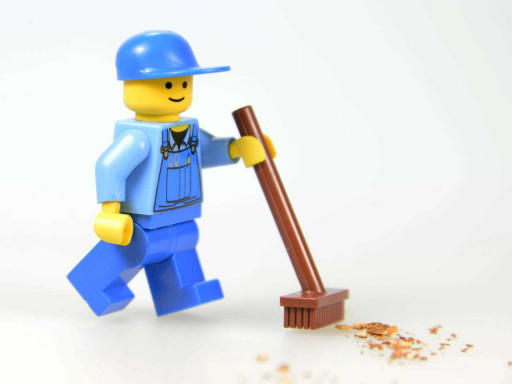What does the law say in brief?
The Health and Safety at Work Act 1974 – requires employers to ensure the health and safety of all employees and anyone who may be affected by their work, so far as is reasonably practicable. This includes taking steps to control slip and trip risks.
Employees have a duty not to put themselves or others in danger and must use any safety equipment provided.
The Management of Health and Safety at Work Regulations 1999 – require employers to assess risks (including slip and trip risks) and where necessary take action to address them.
The Workplace (Health, Safety and Welfare) Regulation 1992 – require floors to be suitable, in good condition and free from obstructions. People should be able to move around safely.
Risk assessment
A risk assessment is not about creating huge amounts of paper work but rather about taking sensible measures to control the risks in your workplace, for example using doormats to stop rainwater being tracked in and making the floor slippery. Consider what risks in your workplace may lead to slip or trip injuries, and decide what effective control measure will prevent these types of accidents.
Practical steps to prevent slips and trips accidents indoor and externally
Stop floors becoming contaminated
- Use entrance matting
- Fix leaks from machinery or buildings
- Make sure plant and equipment are maintained
- Design tasks to minimise spillages
- Plan pedestrian and vehicle routes to avoid contaminated areas
Use the right cleaning methods and cleaning products
- Make sure that your cleaning method is effective for the type of floor you have
- Don’t introduce more slip or trip risks while cleaning is being done eg trailing leads
- Leave smooth floors dry after cleaning or exclude pedestrians until the floor is dry
- Remove spillages promptly
- Have effective arrangements for both routine cleaning and dealing with spills
- Use the appropriate detergent mixed at the correct concentration
Consider the flooring and work environment
- Check for loose, damaged and worn flooring and replace as needed
- Floors likely to get wet or have spillages on them should be of a type that does not become unduly slippery
- Make sure lighting is sufficient and that slopes or steps are clearly visible
- Keep walkways and work areas clear of obstruction
Get the right footwear
- Where floors cannot be kept clean and dry, slip-resistant footwear can help prevent slip accidents eg specific footwear for people working in kitchens
- Trial footwear first to make sure it is suitable for the environment and for those wearing it i.e. comfort and fit
- If footwear is supplied as personal protective equipment (PPE) it must be supplied free of charge to employees
Think about people and organisational factors
- Consider how work is organised and managed eg to avoid rushing, overcrowding, trailing cables
- Make sure employees are involved in the decisions that affect them eg choice of PPE footwear or a change in cleaning methods.
Don't hesitate to get in touch if you have any health and safety concerns in your business, we are here to help you comply with the law, support you to implement best practice to improve performance and will ensure that your business success is not compromised.

